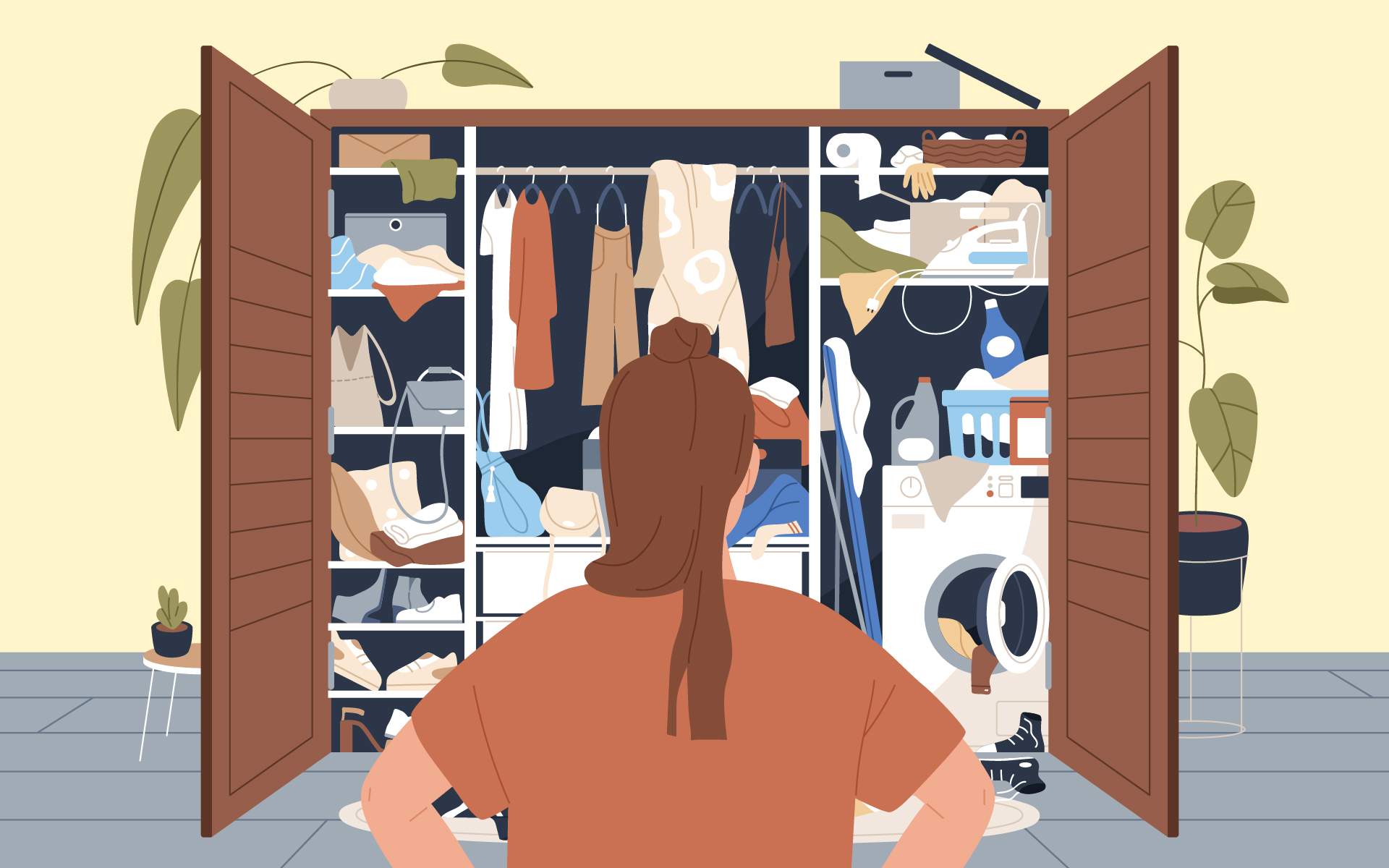Decluttering—Outside and Inside
Sorting through and letting go of physical objects we no longer need teaches us about all the things we’re holding onto. As Barry Boyce realizes, it can also help us find kinder, wiser ways of decluttering our mind. The...

Sorting through and letting go of physical objects we no longer need teaches us about all the things we’re holding onto. As Barry Boyce realizes, it can also help us find kinder, wiser ways of decluttering our mind.
By Barry Boyce November 27, 2024 CalmEvery Friday for the past two months, together with a couple of friends I’ve enlisted, I’ve been spending half the day going through stuff and sending it away—either to donation bins, friends, recycling, or the landfill. Don’t get me wrong. This is not a Marie Kondo-type thing. I’ve got a long way to go before my place would reach the pinnacle of utter simplicity she asks us to aspire to.
I’m also not a hoarder, though. I’m just a middle-of-the-pack accumulator of stuff who has lived in the same place for 35 years, where we’ve raised some children, had some home offices, and indulged my predilection for kitchen gadgetry.
I’ve done several purges before, but this one I’ve been putting off for far too long, surrounded by nests of stuff beckoning to me: What’s going to happen to me when you’re gone. When I told some friends about it, they put me on to Margareta Magnusson’s book with the gruesome title The Gentle Art of Swedish Death Cleaning: How to Free Yourself and Your Family from a Lifetime of Clutter. Yikes. I could not bring myself to label what I was doing as Swedish Death Cleaning. That’s just a little too on the nose.
I also learned from friends who blazed this path before me that there’s lots of stuff nobody, including my children, wants. They don’t want the furniture I inherited from my parents (too old fashioned and no room for it anyway in the smaller-footprint places they live in), and their lifestyle has little to do with heirloom china, silver, and crystal. An article in Forbes confirmed that I’m far from alone. Apparently, says the magazine, all my furniture is lumped under the category of “brown pieces,” and nobody wants old brown pieces.
This time around, though, I haven’t even gotten to the furniture: I was drowning in shelves and shelves of books, ancient records, mementos and souvenirs, old clothes and shoes, orphaned pieces of hardware, toys and games, and small mountains of obsolete electronics and mysterious cords and connectors. At times, when I wasn’t pulling my hair out trying to decide what to keep and what to discard (thank heaven for having friends there to break me out of that trance), I could crack a smile and remember George Carlin’s bit on stuff:
A house is just a pile of stuff with a cover on it. You can see that when you’re taking off in an airplane. You look down, you see everybody’s got a little pile of stuff. All the little piles of stuff … That’s what your house is, a place to keep your stuff while you go out and get…more stuff!
In the middle of all this something surprising happened. Something kind of wonderful. I started to see past the stuff, to understand that objects take on meaning we cling to, but when that meaning is stripped away it becomes what it is: simply stuff. It’s the Buddhist principle of emptiness, which isn’t about a gaping black void, but rather about how the things of our world are empty of the deep meaning we attach to them. That old sweatshirt I loved so much is now nothing more than a rag
Then, there’s the stuff of the mind, and that’s where the wonderful part comes in. Just as our worldly abode collects clutter, so too does our mental abode. It fills up with old ideas and viewpoints, grudges, regrets, hates and loves, opinions and mythologies, and memories of things we’ve done wrong that we sweep under the rug. Stuff we may not have looked at in a long time. But make no mistake: It’s there and it can guide our behavior.
It can be just as valuable, and probably more so, to do some “Swedish Death Cleaning” with the clutter in our mind. As I started to embrace this fact—not for the first time in my life but more so this time—I began to appreciate the lightening and freedom that can come from going through my old mental stuff and doing some aerating and discarding. Every spiritual tradition has some form of going through your stuff, often called confession or atonement, and twelve-step programs ask one to make a “searching and fearless moral inventory.”
Just as our worldly abode collects clutter, so too does our mental abode. It fills up with old ideas and viewpoints, grudges, regrets, hates and loves, opinions and mythologies, and memories of things we’ve done wrong that we sweep under the rug. Stuff we may not have looked at in a long time.
Just how we approach the old mental stuff we’re holding is critically important, though.
For the icky and even ugly stuff we unearth, it’s so easy to beat ourselves up about it, which we falsely think will help matters. In fact, though, we need to forgive first, because if we don’t, the aggression we wield blocks out the light we need to shine on what we’ve done and how we’ve been holding it. If we get past the knee-jerk aggressive response, we may be able to see what we can learn from the past, repair anything that may be reparable, and then send that old mental stuff to the recycling bin.
Decluttering the place where you live can bring spaciousness into your home. Decluttering what’s clogging up your mind lets space into every corner of your life.

 BigThink
BigThink 


























.jpeg)





